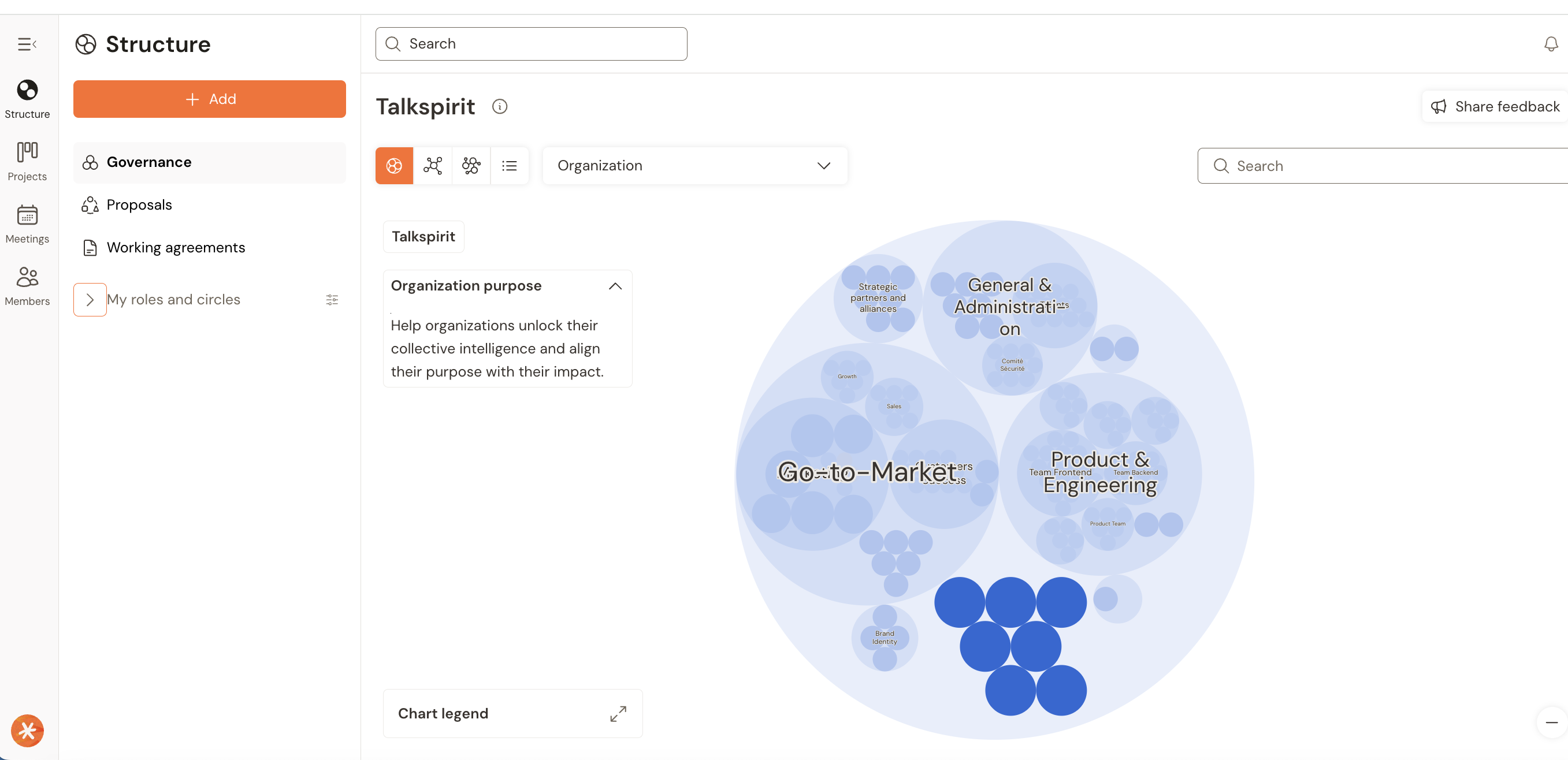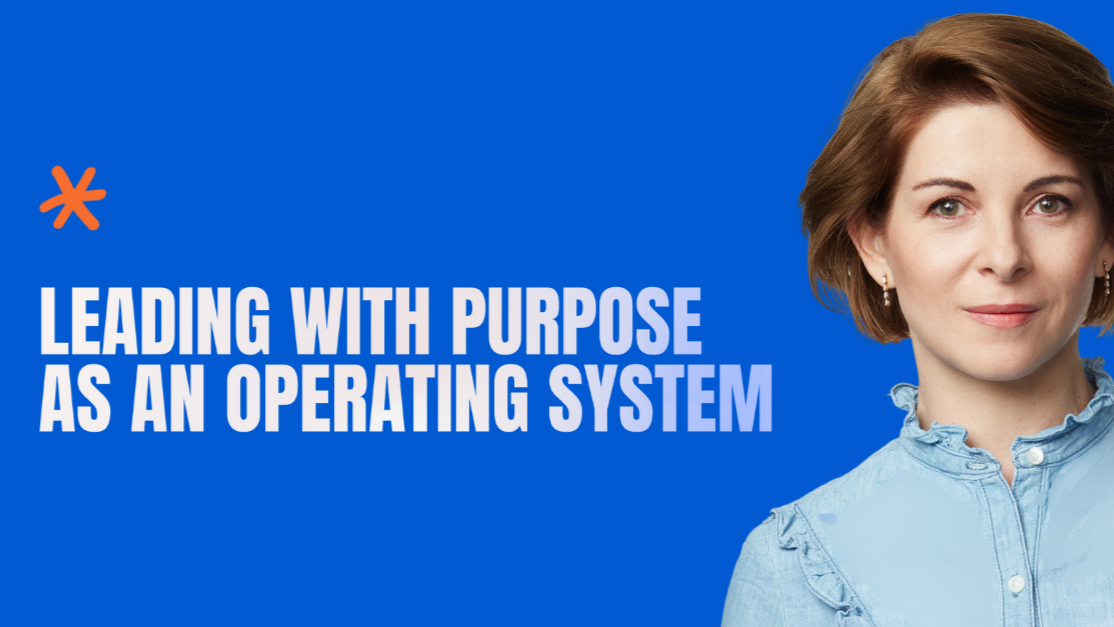Toxic Management: Know What It Is—and How to Deal with It

In the workplace, we tend to talk about toxic management when a manager's behavior makes us feel uneasy. But where does this behavior really come from? Is it the manager alone, or part or all the organization as a whole who’s responsible for it? And how can we put an end to toxic leadership once and for all?
To find out more, we interviewed Emmanuel Levard, founder of Ivolve. Ivolve is a training organization and consultancy that helps organizations implement Holacracy, a governance model that clarifies roles, work processes, and the way authority is distributed throughout an organization.
In this article, Emmanuel Levard explains how to spot and deal with a toxic manager thanks to one key lever: transparency! These best practices are aimed at managers, top management teams (especially HR), and employees alike. No matter what part you play in your organization, read on: we guarantee you'll find it useful!
Toxic Management Is an Organizational Problem—Not an Individual One
"It's difficult to tag a neat definition on the term 'toxic management.' It can come in many forms, and everyone has their own vision of what a toxic manager is. Rather than talking about toxic management, I'd encourage you to name the managerial practices you consider toxic. This will enable you to be as objective as possible," explains Emmanuel Levard.
"These behaviors are often attributed solely to the manager. But most of the time, they’re due to the organization itself. So, the question to ask is not, 'How do I deal with a toxic manager?,' but rather, 'Why do these behaviors exist in my organization?'"
"As we saw with France Télécom (a French telecommunications company hit by a wave of suicides 15-20 years ago), psychosocial risks were generated throughout the organization, not just in isolated individuals."

Where Does Toxic Behavior in the Workplace Come From, and What Does It Look Like?
There can be three different issues that might cause toxic behavior in the workplace.
1. Structural Confusion
"First of all, toxic management can arise from structural difficulties, like those linked to the structure and functioning of the organization. These are often linked to a lack of clarity about the manager's and/or team members' roles, responsibilities, rights, and duties."
"For example, we often confuse managerial functions like team management with HR functions such as annual performance review and merit raises. This can give the impression that managers have the power to direct, whereas legally, only the employer has the capacity to do so via the employment contract," reveals the founder.

2. Operational Challenges
"Toxic leadership behaviors can also be due to operational difficulties, linked to activity steering and team management. These may stem from a lack of support and training for managers, or from a lack of clarity about operational expectations. To remedy this, the options are many: dynamic management practices, clear expectations for cooperation, transparency, and effective prioritization of workload.
3. Interpersonal Issues
"Once the structural and operational problems have been resolved, the remaining tensions are often interpersonal conflicts: misunderstandings, personality conflicts, or just poor communication. These often result from a lack of psychosocial skills (cognitive, emotional, and social), and can be addressed effectively through training and coaching.
Also read: [Expert Opinion] Why and How Can You Become a Benevolent Leader?
How Do You Deal With Toxic Behavior at Work?
If you're faced with a manager who behaves in a toxic way, do not panic: these tips should help you defuse the situation.
- "Identify and name the toxic behavior in question. How can you address behavior that no one has even identified? Before you try to change it, name it!" advises Emmanuel Levard.
- "Check if the behavior Is allowed by the law and adheres to company policy
- If it's illegal (for example, your manager asks you to work until 10pm), investigate existing legal protections.
- If it's legal, but not authorized by company policy (for example, your manager yells at you in a meeting), ask yourself why this framework gives way to toxic management, and what you can do to avoid it.
- If it's legal and authorized by the company framework (for example, a manager micro-managing his teams), think about how to clarify and strengthen internal rules to avoid such issues in the future
If the person behaving in this way is your own manager, I advise you to identify who in the organization is responsible for helping employees in this very situation. If it's an interpersonal problem, you can also submit proposals to your manager to resolve the situation directly," suggests Emmanuel Levard.
- "Think about your own protection. Questioning the company's framework is crucial, but so is questioning your own choices. "If you're in a toxic work environment where the organization isn't clear and no one can help you, ask yourself: what's keeping me here?"

How Can I Establish Clear Boundaries?
So you see: a framework is essential for naming and transforming toxic workplace behaviors. But how do you go about it?
Make the Implicit Explicit
"A company is generally governed by a set of implicit and explicit rules. To address toxic leadership behaviors, we need to make these rules as visible as possible—before even creating new ones. Ideally, this should be done at a time when there is no tension," explains Emmanuel Levard.
Also read: What Does a Transparent Company Actually Look Like?
Clarify What’s Expected of Managers
"Organizations must stop expecting managers to excel simultaneously as operational leaders, coaches, strategists, and top performers. Few individuals possess all these competencies. Clearly defining managerial roles and responsibilities can significantly reduce toxic behaviors."
Establish Relational Agreements
"These agreements enable us to formalize the relational behaviors expected of each team member (including the manager), thereby ridding implicit or emotional expectations of others. They can be defined collaboratively within the team, or via a collective mediation process (which involves calling in an outsider)."
"I recall a time when we used these agreements with a customer to resolve collaboration problems with a team member. The person in question was having difficulty interacting with others because of her autism spectrum sensitivity, but had never told her colleagues about it. Thanks to the relational agreements, she was able to talk about it with her manager. This enabled the team to better understand the behaviors she was exhibiting, and to start afresh on a healthy footing."
Equip Your Teams With the Right Tools
"Finally, to limit toxic management, you need to equip your teams. With tools like Talkspirit, you can clarify roles and structure decision-making processes. The result: tensions are dealt with more quickly, and toxic behavior becomes less common," observes Emmanuel Levard.

With Talkspirit, you can:
- Clearly visualize your organization's entire structure, and the responsibilities and accountabilities of each role.
- Document processes, policies, company and team objectives, making them clear to the whole organization.
- Implement consent-based decision-making processes to give each employee a voice.
- Structure your meetings clearly, and keep meeting notes concise and accessible to all.

Ivolve's Approach to Resolving Workplace Tensions
"At Ivolve, we offer different types of support to help organizations put an end to toxic management."
"If the conflicts are too great to be resolved internally, we intervene with one-day group supervision sessions. These sessions bring to light all the problems encountered by the teams, and then deal with them one by one. Rather than presuming solutions, we use these difficulties as a starting point for developing appropriate proposals. Some will find a structural path, while others will find an operational or relational path."
"When an organization wants to change its practices, but is not encountering major conflicts, it calls on us to support it in its organizational transformation. It's an opportunity to clarify roles, bring about lasting changes in behavior and deal with latent tensions that may have been present for a long time," asserts the founder.
Also read: [Expert Opinion] Steps for Achieving a Successful HR Transformation
The Importance of Establishing a Climate of Trust
"When change is announced, most people don't immediately believe it. To change practices, it's thus essential to create a climate of trust. This trust is built through concrete, positive experiences. For example, if I'm told that my tensions will be dealt with, I'll only believe it if the tensions raised (by me or others) are actually dealt with. Over time, this creates a level of psychological safety sufficient to tackle the real issues causing tension.”
"Trust must be rooted in organizational integrity —not on individuals. Organizations must follow words with actions and genuinely address raised issues."
"One of the major challenges faced by organizations that have adopted Holacracy, sociocracy or Teal models is that the initial promises are not always kept. For example, it is often claimed that there will be no more managers, whereas in practice, someone still has to supervise the work. This discrepancy between rhetoric and reality can fuel employees' distrust."
PS: to find out more about these governance models, we invite you to consult "The Ultimate Guide to Organizational Models.”
A Final Word
"When faced with toxic workplace behaviors, ask yourself two questions:
- Do I believe that my organization can or will stop this kind of behavior?
- If so, where should I go for support? And if not, why would I want to stay in such a toxic environment?
If there's a bit of common sense in the organization, the simple fact of discovering that a manager is behaving in a toxic way will make it possible to address the situation," explains Emmanuel Levard. Naming the problem is the first step to solving it. Once you've made it explicit, you can provide appropriate solutions, such as clarifying roles, making relational agreements, and implementing tools like Talkspirit.
Want to go further? Download our e-book on next-generation leaderships to discover what makes a good manager and how to avoid toxic management 👇
Access White Paper
In our Next-Generation Leadership white paper, you will discover: the skills that every great leader should possess, the different possible management styles, as well as methods and best practices for implementing them within your organization.

























.jpg)





.jpg)
.jpg)






.jpg)
.jpg)


.jpg)

.jpg)


.jpg)











.jpg)




.jpg)



.jpg)

.jpg)



.jpg)








.jpg)


















.jpg)

.jpeg)